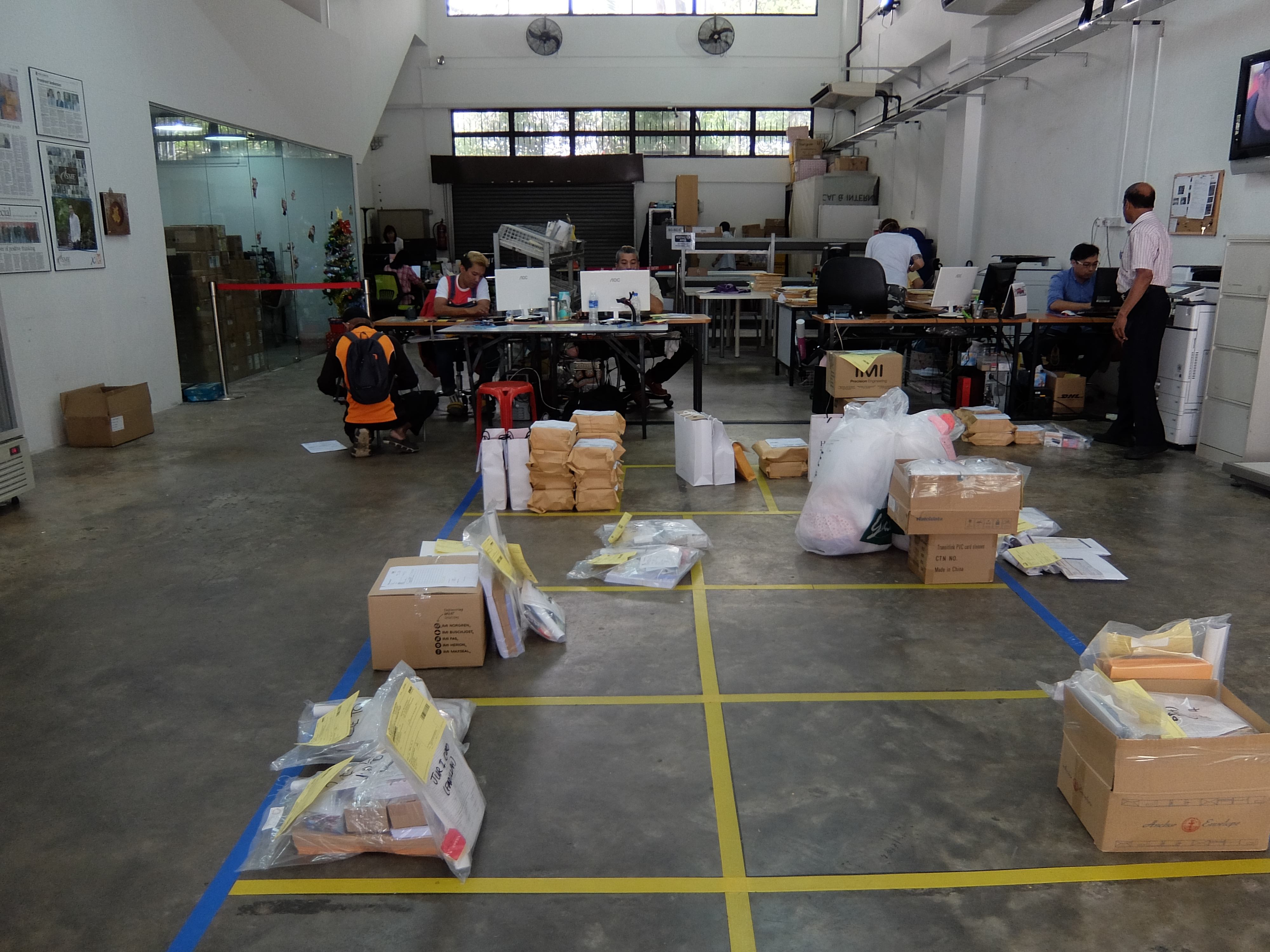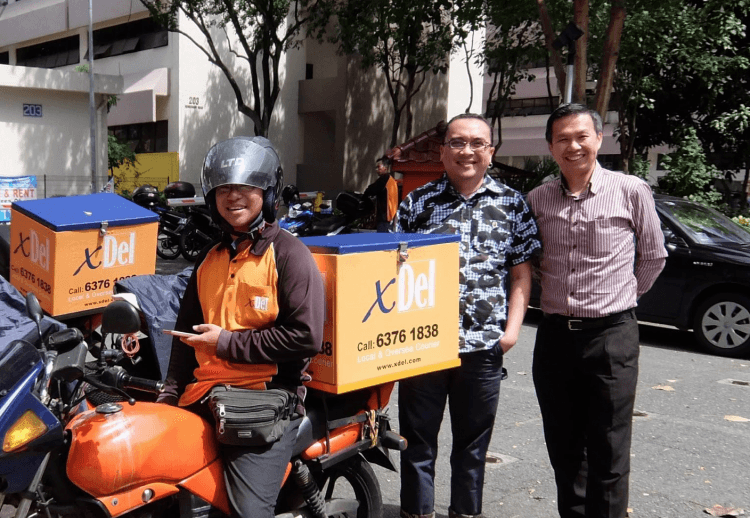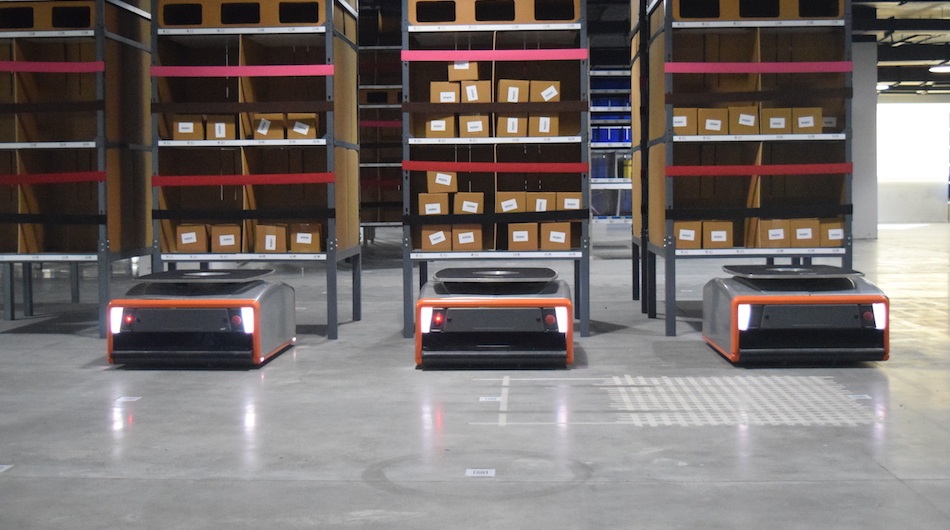
Express deliveries will no longer be a Sisyphean task.
Last-mile fulfillment used to be about getting goods from point A to B. It has now become an incredibly complex operation. Customers are more demanding. They want their goods faster, with updates every step of the way.
Some assume that the faster the delivery, the more it must cost. That could be a myth. Speedier delivery could actually cost less, according to consulting firm AT Kearney.
But does this apply to same-day delivery?
Many doubt that same-day delivery can be profitable. Dalton Caldwell, a partner at Y Combinator, thinks companies could succeed, but need excellent operational chops to do so.
Competition is strong and margins are small
Having offered same-day delivery services for 23 years, Singapore-based express courier service XDel has much to say on this.
“Consumers demand their purchases at the shortest time with the least cost,” says Harold Lee, founder and managing director of XDel.

XDel’s warehouse is neat and organized, with only a few stacked parcels in labeled areas on the floor.
Harold started the business when he was 23. The cost of deliveries in Singapore has gone up significantly since then. Vehicles and petrol expenses have more than doubled, he estimates. Despite this, they’re profitable (granted, they deliver documents, which is much simpler than ecommerce same-day delivery).
He believes the core objective of any business is to be profitable at the earliest possible stage. “If you can manage your overheads well, you can be in the business for a long time.”
Thus, optimizing operations is paramount. “Having standard operating processes and integrating it seamlessly with the technology will determine the overall profitability for companies,” Harold says.
The price must be right
With the influx of new logistics entrants, prices have been getting dangerously and unsustainably low. Harold has learned to never compete on price alone. “We understand the business and the customers thoroughly,” he says. “You need to understand the customer’s needs and how to do it at the best price – not the lowest price.”
“Consumers want their purchases faster, with more choice of delivery, more convenience, and a bucket load more control. That presents a number of challenges and can create a few extra zeros in cost,” Charles Brewer, CEO of DHL eCommerce, tells Tech in Asia.
Last-mile fulfillment represents 10 to 30 percent of the retail sale, says Charles. He comments on why we’re seeing low prices from new entrants in logistics. “Startups, with newfound venture capital, can introduce ‘quick win’ and cheap solutions.”
“There is a need to balance the obvious land grab and developing a model that is sustainable,” says Charles.
Harold uses wonton noodles as an analogy to explain why low-priced deliveries are unsustainable. “One bowl of noodles costs S$3.50, and the hawkers collect cash immediately. Customers also collect their own food. How can a delivery be possible at only S$3.50 when you have so many people involved in the backend, such as customer service, technology, and operations planning?”
“When a customer chooses same-day delivery, he is expecting to receive all the items he ordered before the end of the day, preferably before 7pm and not just before midnight,” explains Nalin Advani, CEO of GreyOrange in the Asia-Pacific region. That leaves a window of fewer than 10 hours for a delivery to be successful.
With such a small margin of error, sorting and delivering parcels on the same day becomes a Sisyphean task. “10,000 or 50,000 customers can order anything from two to eight items. A warehouse could be stocked with a million products or more,” says Nalin. “It becomes a highly complex exercise to get it right for every parcel.”
“Not every client is profitable. We need to make a decision. What is the best fit for our business? We don’t want to spend effort to take on the business but have no margin,” explains Eddie Lee, XDel’s director of sales and marketing.
“It’s better to walk away from a bad deal.”
Invest in people for better service
Harold doesn’t believe in paying cheap. He uses any additional profit to reward his couriers well – even rewarding one courier S$1,000 for receiving a letter of compliment for delivering exceptional service.
“Our couriers are paid as high as S$4,000 a month. I have people who have been with me for 10 to 12 years,” he says.

Harold and Eddie with XDel’s courier.
In an industry with a high turnover rate, he values his couriers who provide the service that customers demand. Ultimately, people want a reliable service over a speedy one.
In the modern on-demand era, tracking codes are unable to satisfy consumers anymore. They want to have full, real-time visibility over their deliveries. In particular, customers want to be able to see where the driver is and exactly when they will arrive.
“One of the greatest sources of friction during last mile delivery is dealing with customer inquiries about their delivery and requests about how it should be delivered. For example, some customers request our deliveryman to not ring the doorbell,” says Kelvin Lim, co-founder of FreshTurf.
If all else fails, providing great customer service is the final step. XDel’s customer service team are all local hires. Eddie says that foreign call centers may not be able to help delivery men go to inaccessible or unmarked pickup points.
“Eventually, our customers come back to us and say that we give better service. They will know who are the boys and who are the men,” Harold says.
Tech, teleportation and more.
According to McKinsey, nearly 25 percent of customers across China, Germany, and the US will pay a premium for same-day or express delivery. Over 30 percent of younger consumers prefer same-day and instant delivery over regular ones. This demand is only expected to grow, and ecommerce players ignore this at their peril.
Some companies may automate to speed things up, like GreyOrange’s Butler. The robotic assistant travels through the warehouse bringing the shelves to the picking and packing stations. The modular technology makes it easy to scale up to accommodate more deliveries.

Meet GreyOrange’s Butler. Image Credit: GreyOrange.
“Technology is a continuous investment. You need to maintain an IT team, and you can imagine how much we have spent over the years since 1995,” Harold says.
Companies featured in this article will be showcased at the Last Mile Fulfilment Asia (LMFAsia) 2017, which will take place from 2nd to 3rd March 2017 at Singapore EXPO. Themed “Go Global, Deliver Local”, LMFAsia 2017 is the region’s only conference and exhibition dedicated to ecommerce fulfillment, where leading experts from the retail, ecommerce, parcel, and logistics industries will dive deep into the topic of cross-border ecommerce fulfillment. For more information, please visit their website.
This post Being profitable is hard. Being profitable through same-day delivery is harder. appeared first on Tech in Asia.